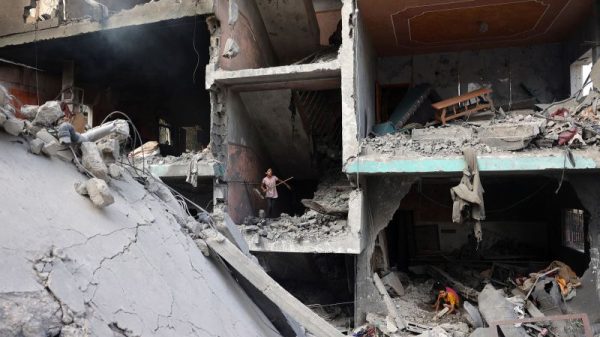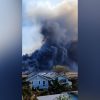Once a tropical storm strengthens into a hurricane, it earns a category designation on the Saffir-Simpson Hurricane Wind Scale: 1 through 5.
Knowing about each category can help predict what damage an incoming storm may inflict – and how best to prepare.
The categories are defined by wind speed, with a storm of Category 3, 4, or 5 considered a major hurricane. And damage is exponential as wind speed increases, meaning a strong Category 3 storm could do up to 60 times as much damage as a weak Category 1 storm.
But it’s not always as simple as ticking up from 1 to 5.
Hurricanes carry many risks not adequately conveyed by the wind speed-based scale, including:
• Storm surge – when winds push water onto shore – which accounted for about half of hurricane fatalities between 1963 and 2012, according to a 2014 report in the Bulletin of the American Meteorological Society;
• Rainfall-induced flooding and mudslides, which made up about a quarter of such deaths, the report shows;
• A storm’s forward speed: Slower storms are more destructive, with strong gusts or rainstorms that pound the same areas for hours or days;
• Tornadoes, which can spawn by the dozen from any hurricane.
Still, the National Hurricane Center uses categories – set by sustained wind speed – to estimate possible property damage from hurricanes. Here’s what’s expected in each:
Category 1: 74-95 mph
Sustained winds are enough to blow shingles off roofs and damage gutters and vinyl siding, the National Oceanic and Atmospheric Administration said.
These winds also can uproot trees and bring down branches, causing power outages and more property damage. They can damage power lines directly, too.
• Hurricane Nicole, a Category 1 storm, made landfall in November 2022 along Florida’s East Coast and impacted places still then recovering from Hurricane Ian less than two months earlier. Nicole caused significant beach erosion and caused more than $1 billion in damages, according to NOAA.
Category 2: 96-110 mph
Sustained winds could cause as much as 20 times the damage as those of a Category 1 storm, including extensive damage to a home’s roof and siding.
Numerous trees and power lines will most likely be damaged, blocking roads, damaging property and knocking out power for days, if not weeks.
• Hurricane Delta struck Louisiana’s coast in October 2020 with winds of 100 mph and made landfall just 12 miles east of where Hurricane Laura had come ashore just six weeks earlier. Delta blew away many tarps on roofs damaged by Laura and did extensive damage to trees, homes and businesses. It also dumped more than a foot of rain across South Louisiana, creating prolonged flooding.
Category 3: 111-129 mph
Now in “major hurricane” territory, wind damage is much more widespread. Well-built homes and other buildings could suffer major damage, and roofs will sustain heavy damage. Numerous trees will be damaged or uprooted.
“Electricity and water will be unavailable for several days to weeks after the storm passes,” NOAA said.
• Hurricane Katrina was a Category 3 storm that struck during the busy 2005 Atlantic hurricane season. It first made landfall along the Florida coast at Category 1 strength before rapidly intensifying in the Gulf of Mexico to Category 5. It weakened before making landfall in southeast Louisiana as a Category 3 storm.
Storm surge was estimated at close to 20 feet along the Mississippi-Alabama border, and estimated winds reached as high as 140 mph near Grand Isle, Louisiana. Levee breaches sent water flooding into much of New Orleans, forcing people onto rooftops for rescue. Katrina killed more than 1,800 people, left as many as 600,000 households displaced for at least a month and became the most costly storm on record, according to NOAA.
Category 4: 130-156 mph
Catastrophic damage can result from these winds. Well-built homes will be heavily damaged, with most of the roof blown away. Trees and power lines will be down. Water and power services could be out for months, with the hardest-hit places uninhabitable for weeks.
In pictures: Hurricane Ian slams the Southeast
• Hurricane Ian made landfall in September 2022 along the southwest Florida coast as a Category 4 storm. It killed 150 people and became the costliest storm on record in Florida. Its enormous size and snail’s pace made it exceedingly destructive, with 150-mph winds that battered coastal communities for hours.
Ian brought record storm surge to Fort Myers and Naples, estimated at 10 to 15 feet, NOAA said. For days after landfall, the storm dumped unprecedented volumes of rain across Florida, triggering tremendous river flooding in the weeks that followed.
Category 5: 157 mph or greater
These are the most powerful storms on Earth. Most well-built homes will be destroyed, many stripped to the foundation. Power outages could last for months, and the areas hardest hit could be uninhabitable for months.
• Hurricane Andrew in August 1992 was one of the worst storms to ever hit the United States, devastating a whole region after it made landfall near Homestead, Florida. Andrew grew from a Category 1 storm to a Category 5 storm in just 36 hours, with maximum winds near Homestead around 165 mph, according to NOAA.
At the time, Andrew was the “costliest and most damaging hurricane ever to hit the United States,” the National Weather Service said.







































